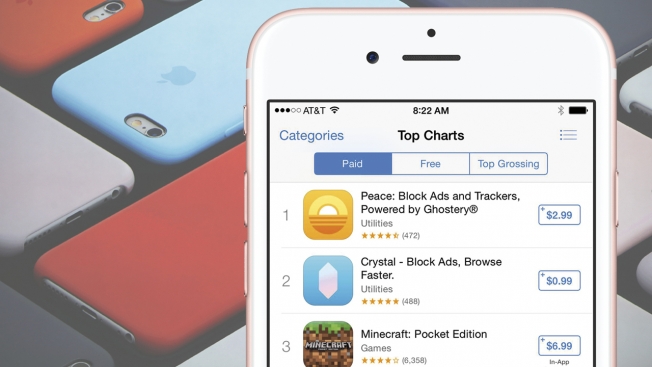Andrea Ramirez | Oct 1, 2015 1:09:00 PM
4 Min Read

At the tail end of Q3, Apple released iOS9 and recieved the fastest OS adoption to date. Even faster was the adoption of a phenomenon that reflects something bigger than an interface update--ad blocking apps. We’re now seeing a drop in popularity, but since the future of mobile search rests heavily on user behaviour and trends, ad blocking will explain what brands will need to do next to remain relevant to mobile customers. Image via AdWeek
The Ad Blocking Phenomenon
Ad blocking is nothing new to users of smart technology, but iOS9 made it a lot more accessible for them. Using these combative apps would in turn give users much faster page loading times, less distractions and a more seamless app browsing experience. Podcaster and blogger Jason Calacanis explained that with this new iOS update, “Apple not only permits but encourages developers to make apps that remove advertising and tracking from the web.” This encouragement is deliberate and has huge implications for Apple’s goals to stay in line with what consumers seek out of their mobile experiences.
As marketers, we see advertising as an essential to the ecosystem of commerce. After all, ads fund most of the free content that users consume on a daily basis. The problem is that users may not realize that there are ‘good’ ads that work toward their benefit and thus opt in to block everything. Google’s Display Network VP Product Development Brad Bender explained the phenomenon from the consumer perspective.
“I think the ad blocking phenomenon is driven by people having bad experiences with ads."
The reason for this surge of ad blocking may be a simple result from the fact that users believe brands are not providing any information with value or context. Less than 24 hours after the launch of Apple’s latest operating system, ad blocking apps were top of the charts worldwide. However, Marco Arment, developer of the number one ad blocking app, Peace, decided to pull his app just a few days after it’s release. Marco goes on to explain his reasoning:
Ad blockers come with an important asterisk: while they do benefit a ton of people in major ways, they also hurt some, including many who don’t deserve the hit.
Marco’s ethical change of heart by pulling his app demonstrates the severity of how these type of apps will change the way we all interact with the web. If Apple users continue to adopt these new ad-blocking apps many advertisers, publishers and marketers that reply on these display advertisements will have to adjust the way they promote their content on the web. Something all smart marketers will need to prepare for.
Shifting to Localization
Let the ad blocking upsurge (and decrease) serve as a lesson that your brand could suffer major repercussions if it doesn’t shift its strategy and pay attention to what customers need at a hyper-local level. At this point, brands are finding their way back on the screens of mobile users using two ways:
Whitelisting- Brands are paying to remain on a list of untouchables in order to continue advertising to consumers. This is a controversial and overall expensive way to ensure you are still connecting with mobile app users.
Native and in-stream ads on Social- This regression might be the method that most brands undertake to get on mobile screens. By getting into destinations where users already are like Facebook and Twitter, there is a likelihood that users may click through to purchase.
If your current marketing objectives will not allow you put money into either of these, then your most feasible strategy would be to personalize your ads for the local context. More transparency, more privacy and overall better creative content are the only strategies you will be able to implement if you continue to advertising. With mobile becoming the primary destination for user searches, location is your cookie and key to creating compelling content for users.
With all the aspects marketers have to deal with on a daily basis trends like the ad-blocker are hard to prepare for. Subscribe to our Brandify blog feed and let us do the research for you.
Andrea is the Social Media and Content Writer Specialist at Brandify.
Offer Post Justifications Spotted in Local Results
Oct 4, 2021 8:47:46 AM
Monday Memo: More than Brands and Influencers, Consumers Trust Each Other
Sep 27, 2021 7:56:34 AM
Monday Memo: Google Adds “Latino-Owned” to GMB Identity Attributes
Sep 20, 2021 7:58:58 AM
Monday Memo: New Study Shows 94% of Consumers Use Online Business Directories
Sep 13, 2021 7:16:55 AM
Monday Memo: The Page Experience Update Has Fully Rolled Out
Sep 6, 2021 7:43:45 AM